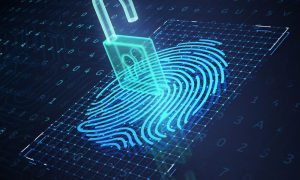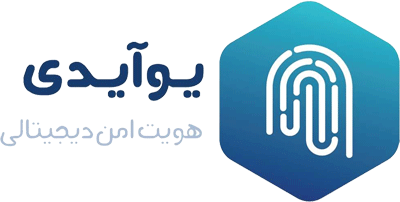Security & Usability for the Digital Transformation
Companies are undergoing a digital transformation called modernization to acquire transformative enterprise objectives, stay competitive, and meet personal expectations. Establishments are migrating from legacy structures to the cloud, resulting in hybrid environments. Customer markets are using the push towards usable, mobile technology.
This move to the cloud consists of both customers and all types of company customers, including employees, contractors, vendors, partners, etc. This shift to a decentralized, identification-centric operational version has placed extended importance on ensuring secure access for users. The future of authentication needs a secure and usable method of authorizing customers to each cloud and on-premises structure.
The Shift in Authentication to Passwordless
The beginning of the password arrived within the mid-1960s at the Massachusetts Institute of Technology (MIT) with the advance of the compatible Time-Sharing System (CTSS).
Advances in secondary factors, from the proliferation of smartphones to the consumerization of biometrics, have led many to question the requirement for and also the use of the password in the slightest degree. In 2019, an anonymous creator released 2.2 billion usernames and passwords freely across attacker forums, known at that point to be the most extensive collection of breaches (Wired).
Tech and security analysts predict enterprises will shift to implementing passwordless authentication for their users to enable this contemporary digital transformation. The first password authentication and, therefore, the MFA secondary authentication became imperative as password theft and data dumps became routine. If strong authentication is predicated on multiple factors, and passwords are the foremost vulnerable factors, why require them?
The Problem With Passwords
-
Passwords are costly and burdensome to manage.
Passwords are costly and burdensome to manage. Passwords take up plenty of IT and help desk support time every year – such a lot, so many large U.S-based organizations have allocated over $1 million annually for password-related support costs, in step with Forrester. Expired passwords cost a large, global enterprise tech and security company $30 per employee case, totaling over $500,000 in support and lost productivity each year. Each year, 20% to 50% of all IT help desk tickets are for password resets, in keeping with The Gartner Group.
-
Passwords cause poor user experiences.
A survey of two hundred IT security leaders performed by the international data group (IDG), subsidized by MobileIron, found that 62 percent of respondents state severe user frustration at password lockouts. Additionally to password lockouts, the sheer style of cloud services and passwords users have to log into to do their job has accelerated over the years.
-
Passwords are easily compromised.
A few examples include credential stuffing (big-scale, automated login attempts the usage of stolen credentials); phishing (an try to deceive users and illegally accumulate sensitive data, like passwords); brute-force attacks (password guessing); etc. As a result, 81% of breaches involve stolen or vulnerable credentials, while 29% of all breaches involve using stolen credentials, in step with Verizon’s 2020 statistics Breach Investigations document.
Other password-associated threats and attacks are generally employed by attackers precisely because they’re easy and work. A 2018 Virginia Tech instructional research paper found password reuse determined amongst 52% of all customers. Thanks to password fatigue, users often choose weak passwords.
What is Passwordless Authentication?
Passwordless authentication establishes a strong guarantee of a human identity without wishing on passwords, allowing clients to authenticate using biometrics, protection keys, or a mobile device. The duo is innovating closer to a passwordless future that balances usability with more robust authentication. Passwordless offers customers a frictionless login experience while reducing administrative burden and normal security risks for the company.
Business Benefits of Passwordless
reduced IT time and expenses, in addition, administrators and enterprises can have the benefit of reduced burden thanks to password-related help desk tickets and password resets.
Posture putting off device reliance on passwords may result in the elimination of related threats and vulnerabilities, including phishing, stolen or weak passwords, password reuse, brute-force attacks, etc.
Today, many passwordless vendors only solve one use case or enable a passwordlite experience for users through single sign-on (SSO), changing the order of things and session management; modern enterprises cannot cover all of their access use cases today with one passwordless solution.
There are additional business challenges to consider:
Administrative and management costs helping passwordless technology may also contain cost-prohibitive security hardware and device control. The value of safety keys and biometric-based authentication is also a barrier to entry to support distinct users across a company.
-
Compliance regulations
Many businesses or supply chain partner companies that want to fulfill compliance requirements for facts regulation have tied their policies to passwords, making it tough to shift to stronger authentication strategies. Federal requirements like NIST 800-63 outline greater pointers for passwords, MFA, and alternative authentication methods, with more current guidance on dropping password expiration and complexity requirements.
Path to Passwordless
-
Increase trust in authentication.
An often-raised difficulty about passwordless is the capacity to increase safety danger when lowering the steps people want to authenticate. address that head-on by growing control supported the context of the consumer’s authentication is that the authentication coming from a trusted device? Does the access device’s security posture meet the organization’s safety hygiene requirements? Eventually, test for suspicious behavior like uncommon authentication factors, unusual places, ordinary times of day, or access attempts by high threat users or against high-risk applications.
-
Provide a passwordless experience.
Instead of relying on something they know (a password), this would be something they have and something they are In this step of the journey, implement standard technology to remove passwords as the primary authentication factor for the use cases and areas with the biggest impact on user experience, cost, and security.
If MFA is a password with one or more authentication factors, passwordless is best described as two or more authentication factors without passwords.
Choosing the correct passwordless authenticator will rely upon your environment – leveraging hardware with integrated biometrics is one option; investing in safety keys that help FIDO2 is another.
WebAuthn is an open standard that enables strong public-key cryptography to ensure user presence at the point of authentication. It requires a supported web browser, operating system and built-in authenticators such as Touch ID, or USB-based security keys
For example, consider using passwordless authentication to log on to your SSO solution securely.
-
Optimize the passwordless toolset.
Achieve passwordless authentication for all use cases, including passwordless for legacy equipment using older protocols and cloud-based applications. Passwordless will finally remove your need to rely on passwords for any login workflow, either backstage or for the duration of your users’ experiences. This is the task in the marketplace nowadays that passwordless-pioneering technology platform providers need to solve. The duo is operating on support for a complete ecosystem that enables passwordless across each business enterprise use case.
What You Can Do Today
Pairing passwordless era with robust MFA to protect access throughout cloud and on-prem is sensible to offer the broadest security insurance today. With MFA in place, you may reduce your reliance on passwords and adjust password regulations to require much less common resets, alleviating assist desk burden and decreasing person frustration. By using our ID verification API, you can go passwordless.












